Like most things in Seattle, the Space Needle began with a cup of coffee. To be fair, there was a napkin involved, too.
It was the end of the 1950s, and Edward E. Carlson was relaxing in a coffee shop, idly doodling on a serviette. It’s impossible to say for sure whether or not the impending World’s Fair was on his mind when he originally sketched the city’s sci-fi pinnacle (for all we know, Carlson might have been dreaming about his dry cleaning whilst scribbling). What we can say is that Carlson’s design, etched onto scrap paper amidst a peppering of coffee stains, served as the inspiration for one of the Northwest’s most important monuments.
It wasn’t completely Carlson’s brainchild, however. Left to his own devices, he would have designed a building resembling either a massive balloon tethered to the earth or an equally large balloon perched on top of a column (the man liked his balloons, it seems). It took architect John Graham and his dedicated team to translate Carlson’s initial inspiration into the flying saucer structure we have today. After successfully building the first suburban shopping mall in the country (which just so happens to be Seattle’s Northgate Mall), Graham teamed up with Carlson to embark on a truly monumental construction project. It took 120-foot wide foundations, more than 400 trucks, the largest volume of continuously poured concrete seen in the Western United States, and a single horsepower motor (to power the tower’s rotating peak) before everything was ready for the 1962 World’s Fair.
Of course, I knew none of this when I first saw the Space Needle, although I was only five years old at the time, so I think my lack of historical awareness can be excused. Also, I was very hungry, and my father had promised (rather preposterously, it seemed to me) that there was a very nice restaurant at the tippy top of the Needle that we’d be eating lunch at very soon. In any case, I was entirely preoccupied with my promised grilled cheese sandwich and couldn’t be bothered with facts about Carlson or Graham or impossibly balloon-like buildings.
After buying our tickets, we boarded the Needle’s elevators and sailed into the clouds. Unsurprisingly, the day was cloudy and cold, so our elevator ride was eerily quiet, as if we were floating out of the atmosphere and into a wilderness of black holes and galaxies. At the top, we ate our lunch and then wandered out to the Observation Deck to take in the view. Peering over the lip of the deck railing, I was buffeted by a terrible wind high above the waves of the Puget Sound. It was at precisely that point in my life that I decided to never travel more than five feet off the ground, and I informed my father of this fact before scurrying back indoors. I bought a bobbly Space Needle keychain in the gift store and then lost it sometime during the car ride home.
These days, the Space Needle isn’t quite the architectural wonder it used to be. Once the tallest structure west of the Mississippi, the 605-foot tall Space Needle is now surpassed by any number of skyscrapers, many of them in Seattle itself. Likewise, it’s space-age design, meant to evoke the unimaginable possibilities of technological advancement, is now somewhat antiquated in a world in which space programs are strapped for funds and relentless automation leads to layoffs. Why, then, should we care about a relic leftover from the middle of the last century?
The answer to this question relies, like most things in Washington, on a rainy day. The next time you have a bit of free time on a drizzly afternoon, board a ferry to Seattle and wander out to the observation deck. I can’t say for certain how long you’ll have to wait to see the Space Needle (that depends on how heavy the rain is, and whether or not you’re traveling from Bremerton or Bainbridge Island), but the wait is more than worth it. There you’ll be, leaning against the ferry’s railing, about to give up as you peer through the fog, and then, without any warning, you’ll see it: a futuristic tower piercing rolling waves of cloud. And then, as you watch the Needle’s saucer hovering in a sunless sky, you’ll understand the inherent optimism of Carlson’s vision, first imagined in an out-of-the-way cafe and based on the absurd notion that a backwater like Seattle could become a beacon of progress. Seen from this vantage point, the Needle reminds us that even on a day of impossible cold and gloom there is always hope for the future, always an opportunity to reinvent that which we believe to be possible. All you need is a cup of coffee and a canvas to draw on.
